Wet spring triggers explosive noxious weed growth in South-Eastern Washington
The mild winter and extended rainy spring created ideal conditions to trigger significant growth of numerous types of noxious weeds all over eastern Washington this year.
The moisture in the soil is resulting in the germination of seeds that have laid dormant in the soil for the past several years. The growing plants from these seeds are now approaching maturity and will very soon be producing their own viable seeds to fuel even more growth.
Noxious weeds are defined as invasive, non-native plants that threaten agricultural crops, local ecosystems, or fish and wildlife habitats. They can include non-native grasses, flowering plants, shrubs and trees, and aquatic plants that invade wetlands, rivers, lakes and shorelines.
Because of their aggressive growth and lack of natural enemies, these species can be highly destructive, competitive or difficult to control. Some are also poisonous to wildlife, domestic animals, and livestock.
Weed laws in the State of Washington spell out all property owner’s responsibility for helping to prevent and control the spread of noxious weeds. Since plants don’t pay a lot of attention to property lines or legal jurisdictions, cooperation among land and property owners is needed so that everyone is protected to the maximum degree possible.
Washington’s first weed law was passed in 1881 to fight the spread of the Canada Thistle, a weed that was accidently brought by early settlers.
The most current statewide list, maintained by the Washington State Noxious Weed Control Board, identifies over 140 noxious weeds of interest and concern and classifies them by how important it is to control their spread.
Local County Weed Boards have been created to maintain lists of noxious weeds in their respective areas and to provide the public with site-specific on-the-ground weed control guidance and project assistance.
Konrad Kauer, Coordinator for the Benton County Weed Control Board said, “Noxious weeds can be identified and controlled as long as the treatments and removal is properly done. Unfortunately, each species tends to require a special approach. Some can be pulled and bagged, while others require repeat periodic spraying with potent selective herbicides. Mowing can actually spread the seeds and make things much worse”.
Konrad recommends home-owners or landowners with a noxious weed issue contact their local county weed board and ask for guidance. Weed Control Board staff members provide noxious weed information to the public and can recommend the best likely weed control methods to use in specific situations.
Here are some of the important noxious weeds found in Benton and Franklin Counties.
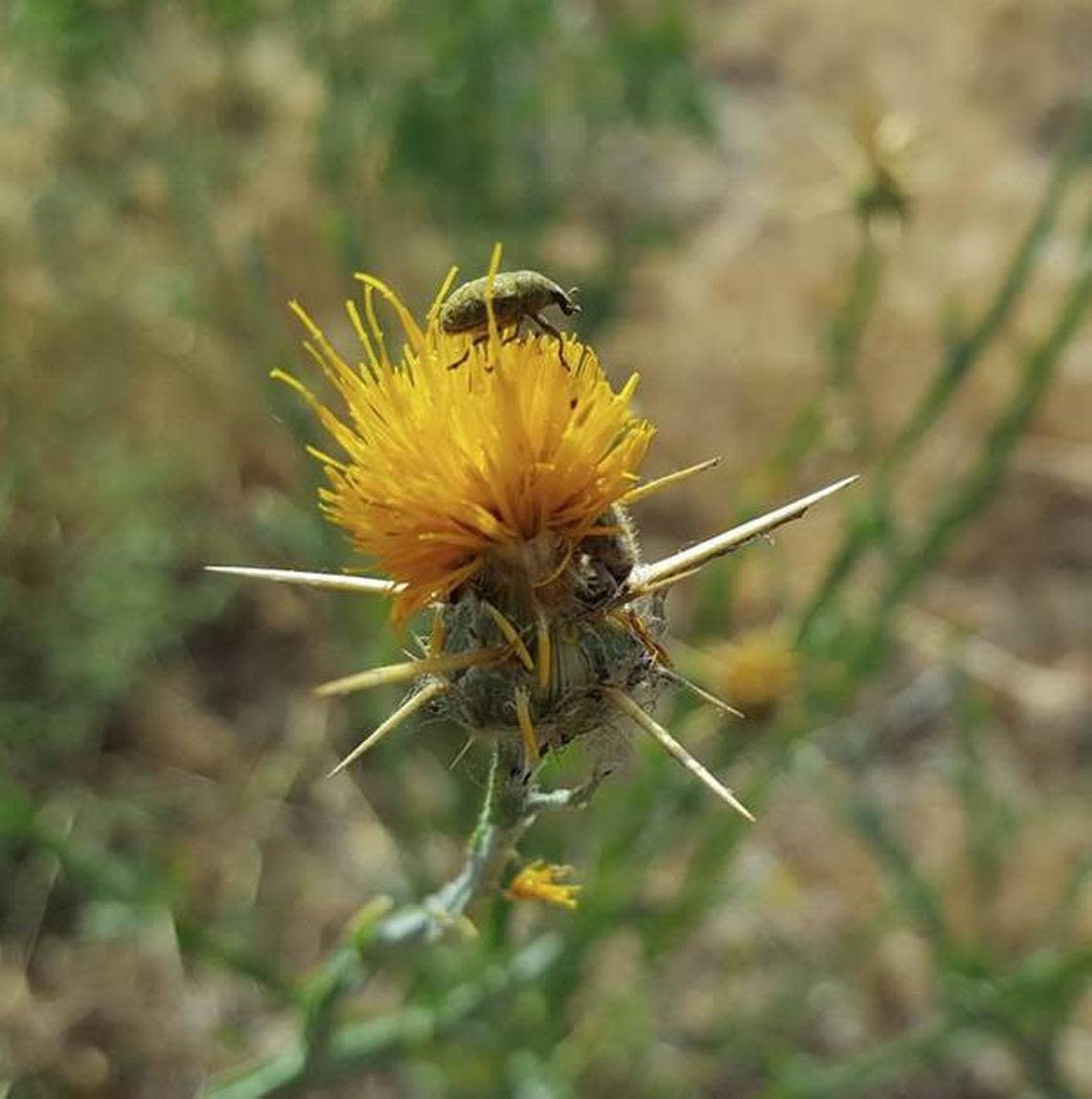
Yellow Star Thistle is an aggressive species that has invaded millions of acres of rangelands in the western United States. Cattle feeding on it may be poorly nourished and can be damaged by the spiny heads. Horses may be poisoned and develop chewing disease.
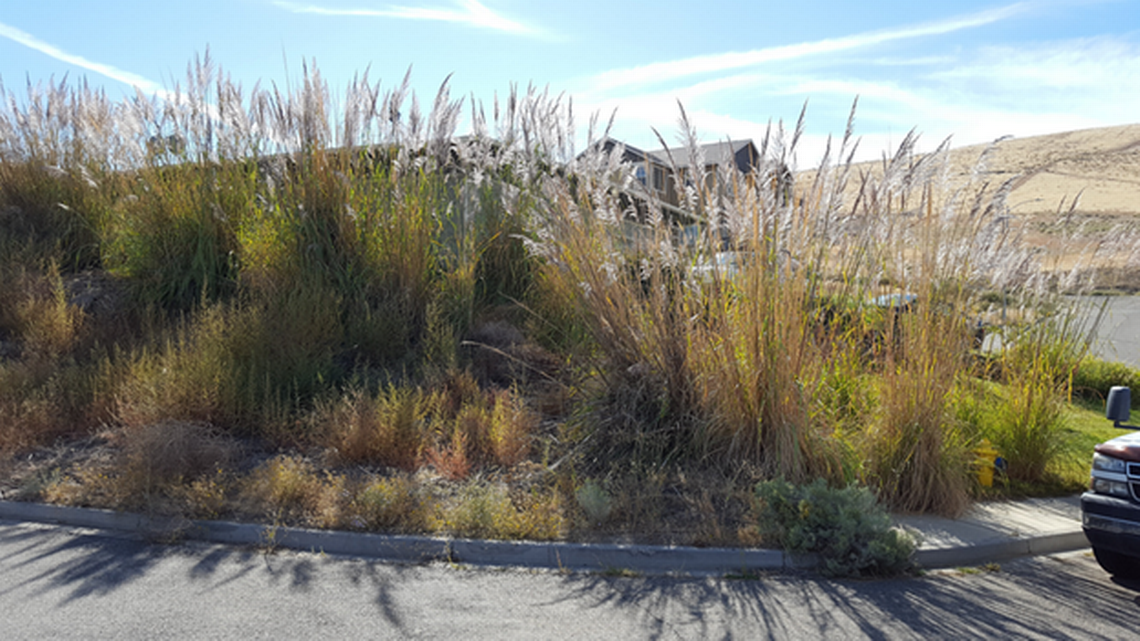
Ravenna Grass often used as an ornamental plant for gardens and landscaping, produces so many seeds that even one or two original plants can overgrow properties quickly, can be very difficult and expensive to remove and is listed on the Washington State Quarantine List.
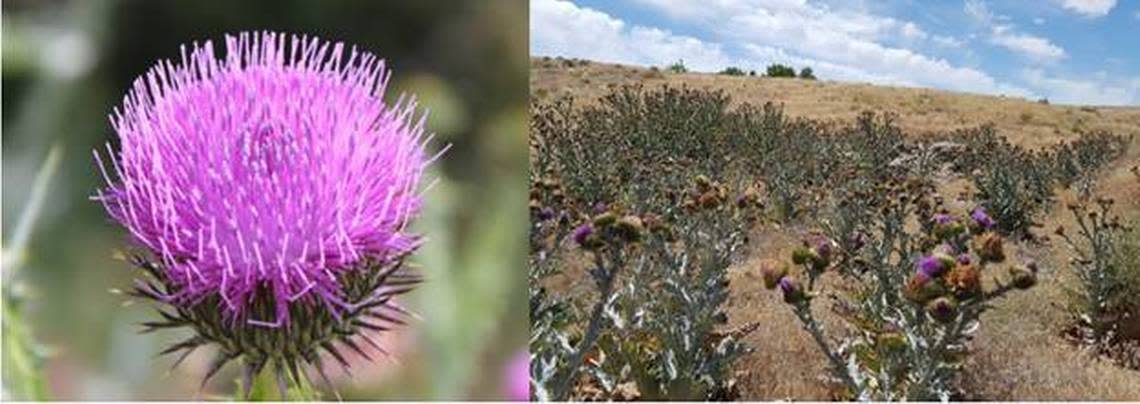
Spotted Thistle may be pretty but the plant is a problem in rangelands and other open areas. Infestations of Scotch thistle reduce forage production and virtually prohibit land utilization for livestock and block access for people and wildlife. Dense stands of the large, spiny plants exclude animals from grazing and access to water. It is listed on the Washington State Quarantine List.
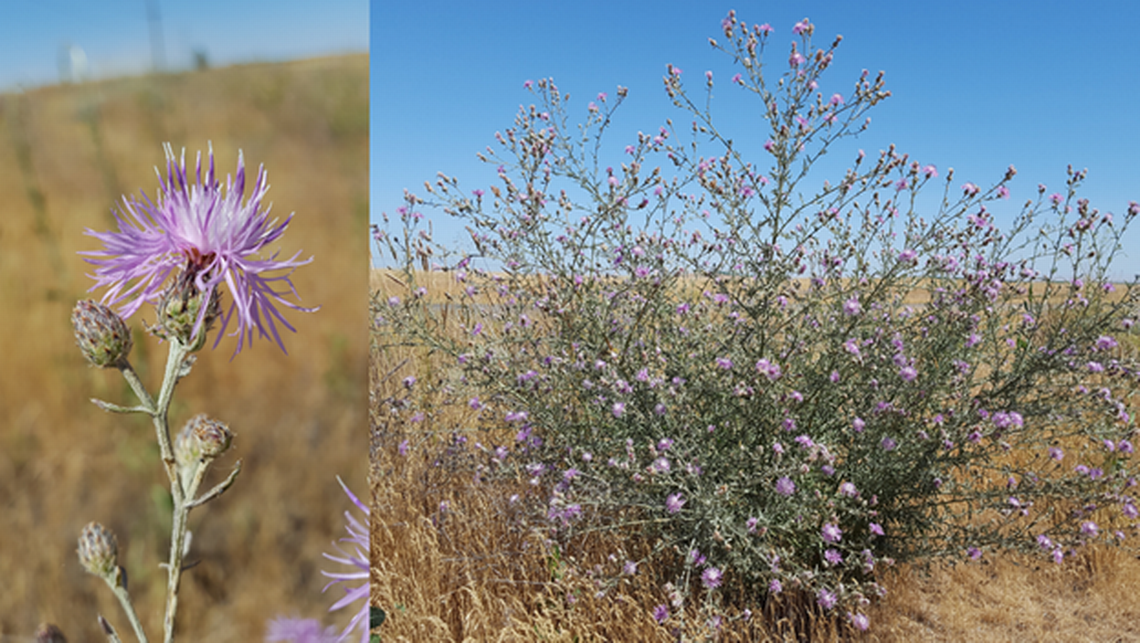
Spotted Knapweed is pretty high on the Benton County priority list and while it is not a very common weed and the Weed Board works fast to control them and keep it from becoming established. Its more often found in the south western part of the county but it is found in Richland and Kennewick. It is huge problem around Spokane. It’s relative, Diffuse Knapweed, is found in the local area.
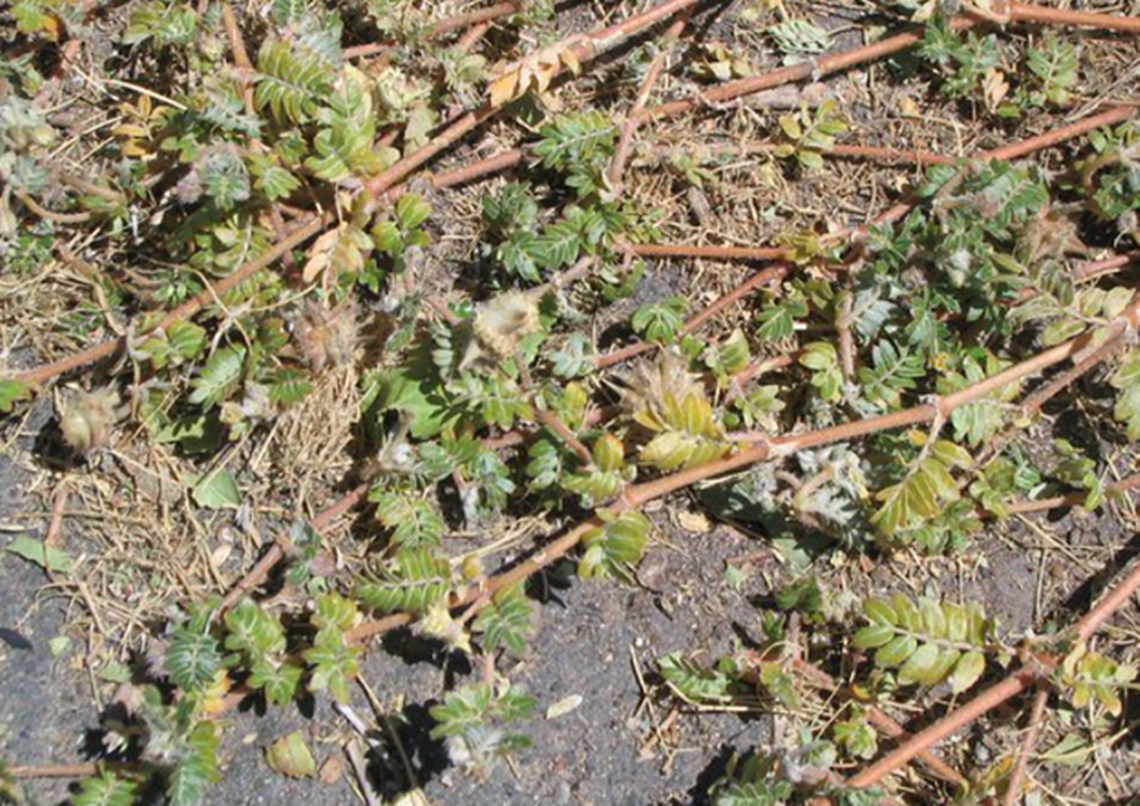
Puncture Vine is a toxic plant that grows in pastures, roadsides, waste areas, and cultivated fields. The sharp spines of the fruit can puncture bicycle tires and get carried indoors on shoes. It’s also a painful problem to gardeners, landscapers, construction workers, and to fruit pickers in orchards or vineyards.
Betsy Crysel, Office Manager at Franklin County Weed Control Board, describes just a few of the dozens of Class B and Class C noxious weeds currently listed for Franklin County.
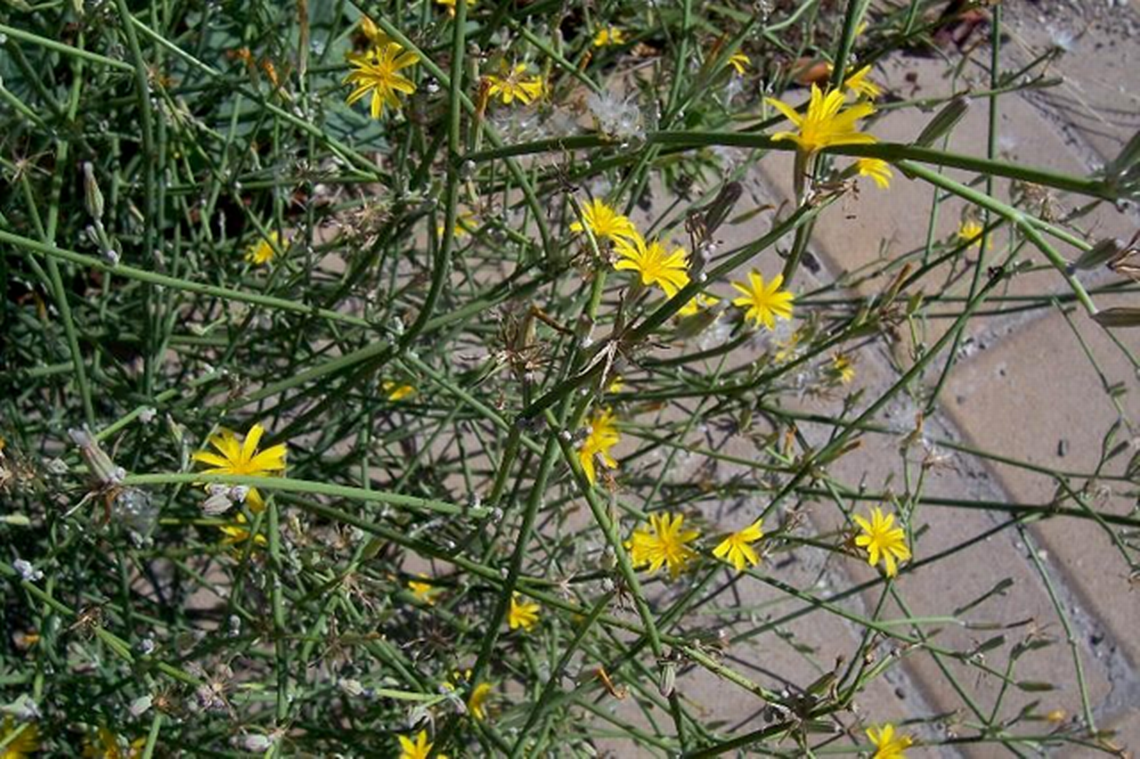
Rush skeletonweed can be found on just about any undeveloped lot in the Tri-Cities and is also found along Interstate, Highway 395 and rural road shoulders, particularly as you get closer to the dryland farming areas. It thrives in sandy textured or rocky soils along roadsides, State Highways, rangeland and grain fields. It is rapidly encroaching into dryland farming areas and Conservation Reserve Program (CRP) plantings. It is also listed on the Washington State Quarantine List.
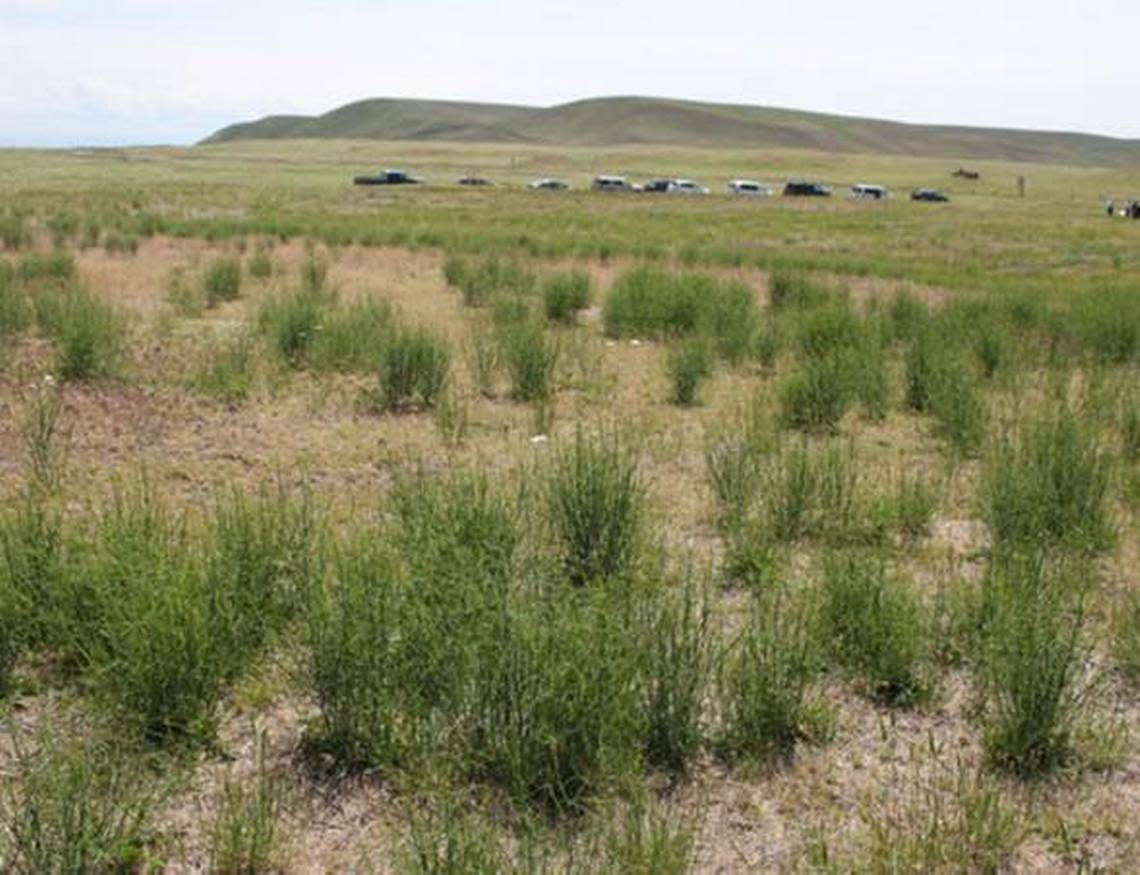
Rush skeletonweed is a threat to irrigated lands, wheat areas, and rangelands, displacing the native and beneficial species grazed by livestock and wildlife.
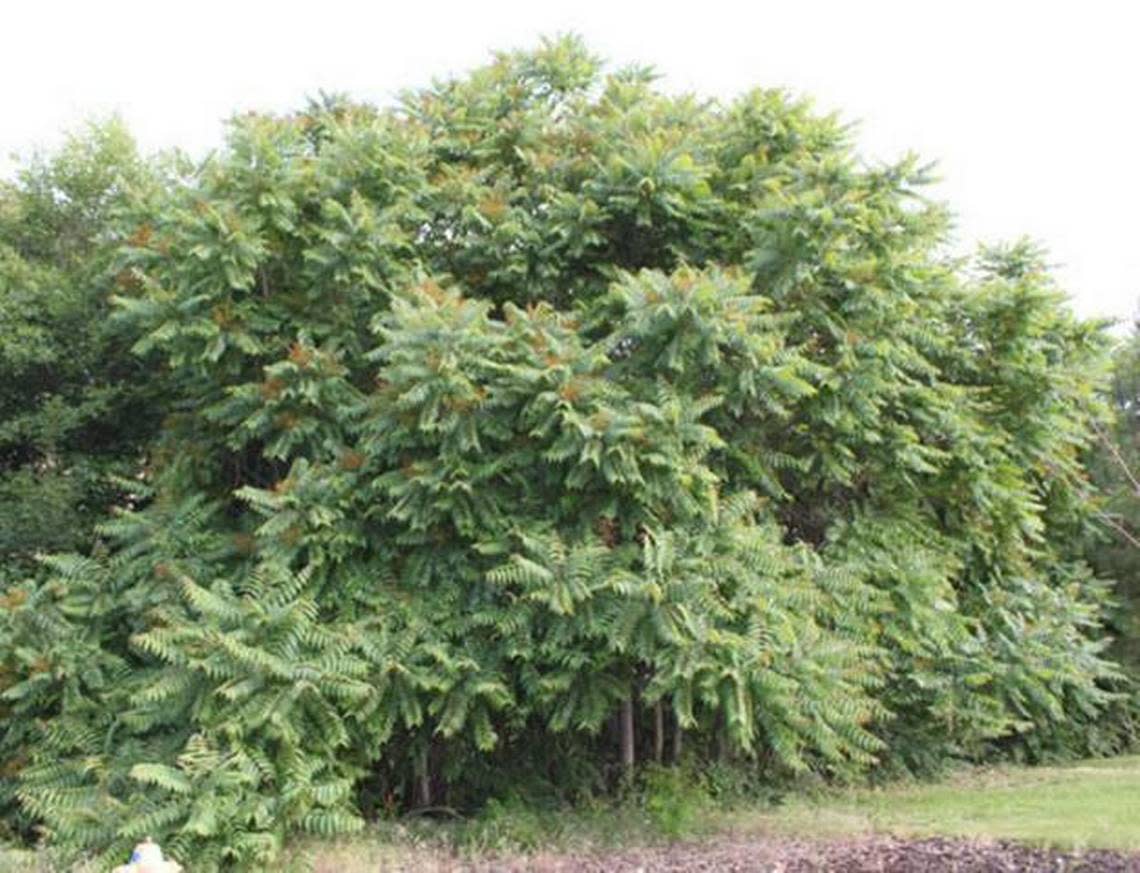
Tree-of-Heaven is a fast-growing tree that reaches up to 60-feet-high and is often confused with Sumac. It has been planted all over the Tri-Cities, grows fast, and outcompetes native plants. It captures chemicals that cause skin rashes and sensitivity to some people, releases substances that inhibit plant growth underneath it, and is noted as a preferred host for the spotted lanternfly, an insect that could damage many crops in Washington if it were able to establish here.
The Franklin County Noxious Weed Board is holding a How to Eliminate Tree of Heaven Demo at Sacajawea Park on July 23 at 9 to 11 am. The event is free and open to the public. Register online at www.fcweedboard.com
Badger and Candy Mountain Noxious Weed Control Project
Dave Beach, a Board member for Friends of Badger Mountain, is leading coordinating volunteer noxious weed removal efforts on Candy and Badger Mountains. “Now is the time to get them removed before they begin shedding their seeds and we welcome interested people willing to spend a few hours helping out with hand pulling, bagging and removing.”

Experienced “weed warriors” will teach newcomers how to identify and remove the noxious weeds and protect the desirable native plants.
The Yellow Starthistle, Diffuse Knapweed, and Rush skeletonweed plants are now big enough to more easily identify from among the native plants and common weeds.
Workers meet each Wednesday and Sunday morning for the coming weeks. If we don’t make enough progress, we may also schedule Fridays.
When: Wednesdays and Sundays July through August until the plants are gone.
Time: 7:00 - 10:00 AM
Where: Meet at Candy Mountain Trailhead parking lot. Address is 71004 E. 669 PR N.E. Directions - turn off of Dallas Rd. onto PR669 Rd. NE. Drive uphill to the parking lot on the right. After the meeting, the volunteers will hike to the work area or sometimes drive our vehicles to another location closer to the work area.
You can show up with good strong leather gloves, sun protection, and wear long sleeved shirts and long pants. A small set of pruning clippers is useful. Bring a fanny pack or small back pack to carry your “stuff” -- gloves, hat, phone, water, snacks, sun protection, etc. Bring some heavy weight large plastic bags for the weeds if you have them. Extra bags, will be available. The ground is sloped, uneven and rocky so sturdy boots are recommended. Wearing boot gaiters will also keep the Cheatgrass out of your socks and boots.
If you are interested in helping out contact Dave Beach, with Friends of Badger Mountain at davidbeach47@gmail.com or call 509-554-0919
Paul Krupin is an avid local outdoors enthusiast, retired environmental specialist and attorney, and a member of the InterMountain Alpine Club (IMAC). He is the author of the Exploring the National Parks and Monuments, The Science of the National Parks, and the Digital Hiking Guides for Washington, Oregon and California. Learn more at Presari.com He can be reached at pjkrupin@gmail.com.
